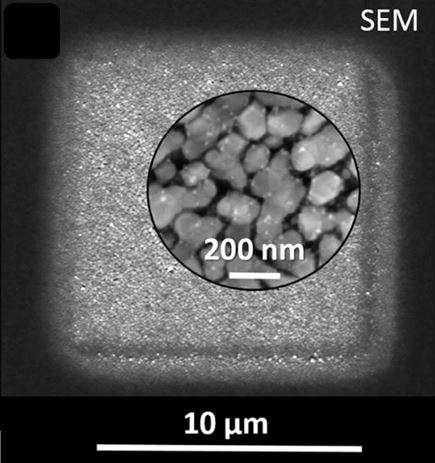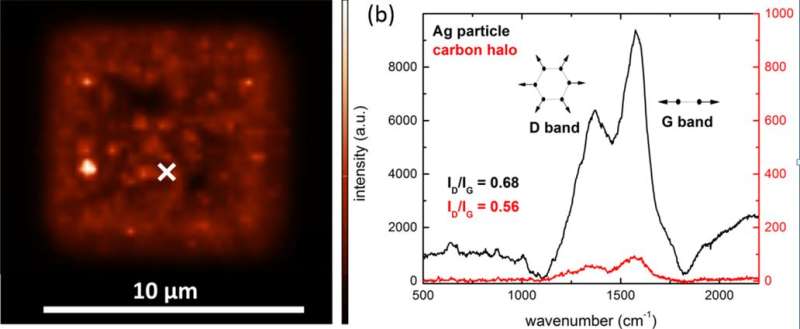Writing with the electron beam—now in silver

When it comes to extremely fine, precise features, a scanning electron microscope (SEM) is unrivaled. A focused electron beam can directly deposit complex features onto a substrate in a single step (Electron-Beam-Induced Deposition, EBID). While this is an established technique for gold, platinum, copper and further metals, direct electron beam writing of silver remained elusive. Yet, the noble metal silver promises especially interesting potential applications in nano-optics in information technology. For the first time a team from the HZB and the Swiss Federal Laboratories for Materials Science and Technology (EMPA) has successfully realized the local deposition of silver nanocrystals by EBID.
The results have now been published in the journal of the American Chemical Society's ACS Applied Materials Interfaces.
The chemistry of typical silver compounds is extremely challenging. They are difficult to evaporate and are highly reactive. During the heating in the injection unit, they tend to chemically react with the reservoir walls. Along their path from the reservoir to the tip of the needle, these compounds freeze again at the slightest drop in temperature and obstruct the tube. "It took us a lot of time and effort to design a new injection unit and find a suitable silver compound", explains HZB physicist Dr. Katja Höflich, who carried out the experiments as part of a Helmholtz Postdoctoral Fellowship at EMPA. "Finally, we managed it. The compound silver dimethylbutyrate remains stable and dissociates only in the focus of the electron beam." Höflich and her colleagues used the EBID method to create sharply defined areas of tiny silver nanocrystals for the first time.
Writing with the electron beam
The principle works as follows: tiny amounts of a precursor substance - typically a metal-organic compound - are injected into the vacuum chamber of the SEM near the surface of the sample using a needle. Where the electron beam hits the sample surface, the precursor molecules dissociate and their non-volatile constituents are deposited in place. The electron beam can move like a pen over the substrate to create the desired features. For many precursor substances this works even in three dimensions.

The fabricated silver nanostructures possess remarkable optical properties: visible light can excite the free electrons in the metal into oscillations referred to as plasmons. Plasmons are accompanied by an extreme lighting. Information about the composition of the surfaces can be obtained from the colour and intensity of this scattered light. This effect can be utilised in Raman spectroscopy to detect the fingerprint of specific molecules that bind to the silver surface - down to the level of a single molecule. Hence, silver nanostructures are good candidates as sensors for explosives or other dangerous compounds.
Further applications are conceivable in future information technology: complex silver nanostructures may constitute the basis for purely optical information processing. To realize this, the process has to be refined, such that complex features can be directly written as already possible for other precursor compounds.
More information: Katja Höflich et al, Direct Electron Beam Writing of Silver-Based Nanostructures, ACS Applied Materials & Interfaces (2017). DOI: 10.1021/acsami.7b04353
Journal information: ACS Applied Materials and Interfaces
Provided by Helmholtz Association of German Research Centres




















